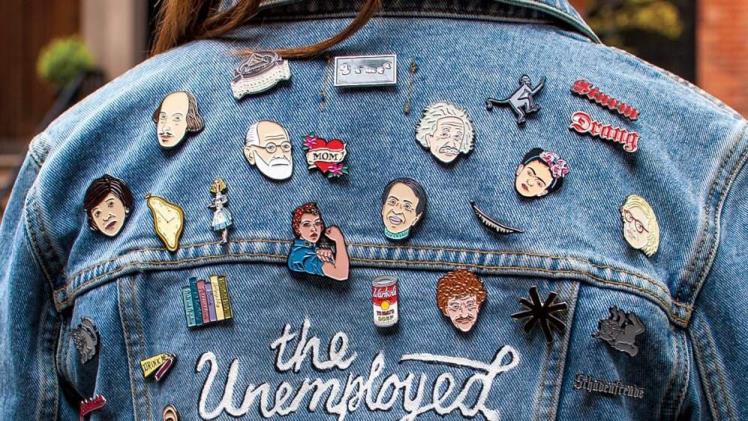In a world where personal expression and unique identities are celebrated, custom pins have emerged as a vibrant medium for individuals and brands alike to showcase their creativity and values. Whether it’s for personal flair, promotional purposes, or to commemorate events, designing custom pins offers a canvas for creativity that’s both accessible and profound.
This guide aims to unlock your creative potential, guiding you through the journey of designing custom pins that stand out.
Why Custom Pins?
Custom pins serve not just as fashion statements but as powerful tools for expression. They can symbolize beliefs, represent communities, or simply showcase one’s personality. The versatility and the emotional connection they foster make custom pins a popular choice for artists, brands, and individuals aiming to make a statement.
The Rise of Pin Culture
Pin culture has seen a resurgence, with collections becoming as diverse as the people who create and wear them. This resurgence is fueled by the desire for tangible, personal connections in an increasingly digital world. Pins offer a form of self-expression that’s both intimate and shareable.
Getting Started with Design
Finding Your Inspiration
Inspiration can come from anywhere – art, nature, social movements, personal experiences. Keeping an inspiration journal or board can help crystallize your ideas into tangible design concepts.
Sketching Your Ideas
Whether you prefer digital tools or the tactile feel of paper, sketching is a crucial step in bringing your pin designs to life. It allows you to experiment with different concepts and layouts without commitment.
Digital vs. Hand-drawn
Both methods have their advantages. Digital sketches offer ease of editing and precision, while hand-drawn sketches bring a personal touch that can add warmth and originality to your design.
Understanding Materials
-
Metal Options:
- Brass: Classic and versatile, ideal for intricate designs with a timeless appeal.
- Zinc Alloy: Offers durability and affordability, suitable for bulk production.
- Stainless Steel: Provides a sleek, modern look with excellent corrosion resistance.
- Copper: Radiates warmth and elegance, perfect for premium or artisanal pins.
-
Enamel Types:
- Soft Enamel: Delivers a textured, dimensional finish at a lower cost.
- Hard Enamel: Renders a smooth, glossy surface with vibrant colors and added durability.
- Cloisonné: Embodies a traditional, high-end aesthetic with precise detailing.
-
Alternative Materials:
- Acrylic: Lightweight and customizable, suitable for vibrant, eye-catching designs.
- Wood: Adds a rustic charm and eco-friendly appeal to bespoke pin creations.
- Resin: Offers versatility in shapes and colors, ideal for intricate and artistic designs.
Exploring Manufacturing Processes:
Die-Striking:
– Ideal for metal pins with raised and recessed areas, providing sharp details.
– Requires custom molds and high-pressure stamping for precise reproduction.
Casting:
– Enables intricate designs with three-dimensional features, suitable for sculptural pins.
– Involves pouring molten metal into molds and allowing it to cool and solidify.
Printing:
- Digital Printing: Offers unlimited color options and detailed graphics for complex designs.
- Screen Printing: Delivers vibrant colors and crisp lines, best for simpler designs.
Handcrafting:
- Artisanal Techniques: Embrace hand-painting, etching, or carving for unique, personalized touches.
- Requires skilled craftsmanship and attention to detail, ideal for small-batch or one-of-a-kind creations.
Factors Influencing Material and Process Selection:
Design Complexity:
- Intricate designs may require materials and processes that offer finer detail reproduction.
Budget Considerations:
- Balancing material quality and manufacturing costs to meet financial constraints.
Quantity and Timeline:
- Selecting processes suited for the desired production volume and project deadlines.
Brand Identity and Audience:
- Aligning material choices and manufacturing techniques with brand aesthetics and target market preferences.
Conclusion
Designing custom pins is a journey fueled by imagination and craftsmanship, where the selection of materials and manufacturing processes plays a pivotal role in transforming concepts into tangible creations.
By understanding the diverse options available and considering factors such as design complexity, budget, and brand identity, you can embark on this creative endeavor with confidence, unlocking endless possibilities to express yourself or your brand through unique, personalized pins. Let this guide serve as your compass in navigating the exciting realm of custom pin design, where creativity knows no bounds.
FAQs
-
What are custom pins, and why are they popular?
- Custom pins are personalized accessories typically made from metal, enamel, acrylic, or other materials, featuring unique designs, logos, or messages. They are popular for their versatility in self-expression, brand promotion, and commemorative purposes, serving as wearable art or collectible items.
-
How do I design my own custom pins?
- Designing custom pins involves conceptualizing your idea, selecting suitable materials, refining the design through sketches or digital software, and choosing a manufacturing process to bring your design to life. This guide provides comprehensive insights into each step of the design process.
-
What materials are commonly used for custom pins?
- Common materials for custom pins include various metals like brass, zinc alloy, stainless steel, and copper, as well as enamel, acrylic, wood, and resin. Each material offers distinct aesthetics, durability, and cost considerations, catering to different design preferences and budgetary constraints.

